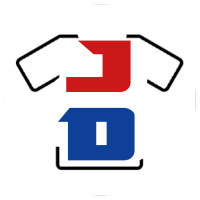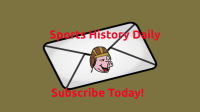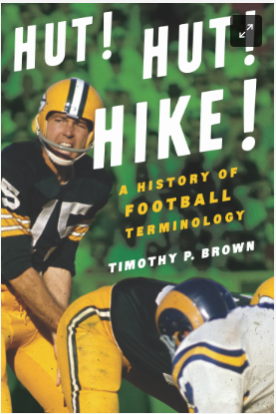A Baseball Legend with a Wild Streak
Charles Radbourn was a larger-than-life figure in the early days of baseball. He was a dominant pitcher, a prolific winner, and a source of endless fascination with his unorthodox routines and flamboyant personality.
Born to Pitch:
Born in Rochester, New York, in 1854, Radbourn displayed a natural talent for throwing from a young age. He honed his skills by repeatedly throwing a ball against a barn, strengthening his arm for the future challenges of professional baseball.
Early Success:
Radbourn made his major league debut in 1880 and quickly established himself as a force to be reckoned with. He was known for his fastball, curveball, and exceptional control, which he attributed to his unconventional habit of chewing tobacco and rubbing it on the ball.
Record-Breaking Season:
Radbourn's most remarkable season came in 1884, when he won an astounding 59 games for the Providence Grays. This record stood for over 100 years and remains one of the most untouchable achievements in baseball history. He accomplished this feat by pitching a staggering 678 innings, a testament to his exceptional stamina and durability.
Unconventional Methods:
Radbourn was known for his quirky training methods and unorthodox approach to the game. He preferred to sleep in until noon, often arriving at the ballpark just moments before his scheduled start. He also had a reputation for enjoying a good drink, which some attributed to his occasional wildness on the mound.
Beyond Baseball:
Radbourn's life off the field was as colorful as his on-field exploits. He was a skilled hunter and fisherman, and he loved to gamble and tell stories. He also had a passionate side, volunteering his time to help the less fortunate.
Legacy:
Despite his eccentricities, Radbourn was a true pioneer of baseball. He helped shape the game with his innovative pitching style and his record-breaking achievements. He was inducted into the Baseball Hall of Fame in 1939, receiving recognition for his remarkable career.
Beyond Numbers:
Old Hoss Radbourn was more than just a baseball player. He was a symbol of an era, a larger-than-life personality who captured the imagination of fans and solidified his place as a true legend of the game. His story continues to inspire athletes and fans alike, reminding us that baseball is more than just statistics; it's about passion, dedication, and the thrill of the unexpected.
For more on Radbourn check out this Wikipedia bio:
A Visual History of the Dodgers' Uniform Evolution
Born as the Brooklyn Atlantics in 1883, the team donned simple gray flannel uniforms embroidered with a red "A." With their hand-me-down attire, they earned the nickname "Bums," a moniker proudly displayed on their caps in later years. The arrival of Jackie Robinson in 1947 brought groundbreaking change, not just in baseball but also in the team's visual identity. The classic Brooklyn Dodger blue, introduced in 1938, became synonymous with desegregation and progress.
The move to Los Angeles in 1958 marked a major shift. Initially retaining the Brooklyn logo, the team experimented with variations until 1962, finally settling on the now-iconic interlocking "LA" emblem, designed by legendary sportswriter, Furman Bisher. This logo, symbolizing the merging of Brooklyn's legacy with its new Californian home, remains a cornerstone of their identity.
The uniforms themselves underwent stylistic changes throughout the decades. The 1960s saw a sleeker, modern look with pinstripes and white piping. The 1970s introduced the red alternate jersey, originally worn just on Fridays, which later became a fan favorite. The 1980s ushered in the classic white road jersey with the interlocking "LA" in blue script, a timeless design still worn today.
Special occasions prompted commemorative uniforms, further enriching the Dodgers' visual history. The powder blue "Sunday whites" from the 1970s and the throwback Brooklyn-inspired jerseys worn in recent years pay homage to the team's diverse heritage. Collaboration with artists like Takashi Murakami added a contemporary flair, pushing the boundaries of traditional uniform design.
Modernity brought technological advancements, with moisture-wicking fabrics and performance designs prioritizing player comfort. Yet, the core elements – the blue and white colors, the interlocking "LA" logo, and the clean, classic lines – remain faithfully preserved.
Cool Papa Bell The Baseball Legend
The Uncrowned King of Baseball
Dominating the Negro Leagues:
-Gibby boasted a career batting average estimated at .359, with some claiming it reached near .400. He reportedly hit over 800 home runs, a staggering number even in the homer-prone Negro Leagues.
-His prodigious power and smooth swing earned him admiration from all, including MLB stars like Willie Mays and Satchel Paige, who called him "the best hitter I ever saw."
Beyond the Stats:
-Gibson wasn't just a one-dimensional slugger. He was a well-rounded player with exceptional plate discipline, on-base skills, and defensive prowess behind the plate.
-His impact extended beyond the field. He was a charismatic leader and advocate for racial equality, inspiring generations of Black players.
Missed Opportunities and Enduring Legacy:
-Gibby's career was tragically cut short in 1947 at the age of 36. Despite his immense talent, he never got the chance to shine in the MLB, a loss for the game and fans everywhere.
-However, his story remains a powerful reminder of the talent lost due to segregation and continues to inspire players and fans to fight for equality in sports.
Today, Josh Gibson is rightfully enshrined in the Baseball Hall of Fame. His name, though often overshadowed by MLB legends, resonates as a symbol of baseball's hidden history and the exceptional talent denied fair opportunities.
Martin Dihigo Baseball Hall of Fame Outfielder
Dihigo's professional journey began in Cuba in 1922, but his talents quickly transcended borders. He played extensively in the Negro Leagues from 1923 to the 1940s, showcasing his versatility across all nine positions. Statistics show a strong hitter with a .307 batting average and a slugger with over 129 home runs across his career. But Dihigo wasn't just a threat at the plate – he was a dominant pitcher as well. Though estimates vary, he's credited with over 100 wins and a sub-4 ERA, solidifying his two-way prowess.
His talents extended beyond the Negro Leagues. Dihigo played and managed teams in Cuba, Mexico, Venezuela, and the Dominican Republic, leaving his mark on Latin American baseball as well. Stories abound of his incredible feats, like throwing the first no-hitter in Mexican League history while simultaneously winning the batting title in the same season.
Born May 25, 1905, in Cidra, Cuba, was Baseball Hall of Fame Out Fielder Martin Dihigo. Martin played in the Negro Leagues of Baseball for the Cuban Stars (East) (1923–1927, 1930), Homestead Grays (1927–28), Hilldale Giants (1929, 1930–31), and the New York Cubans (1935–36, 1945).
His honors and awards include being a two-time Negro League All-Star (1935, 1945), a four-time Cuban League MVP (1927/28, 1935/36, 1936/37, 1941/42), a Eastern Colored League batting champion (1926), and Dihigo has the distinction of being the only person to be inducted into five different Baseball Halls of Fame as his career is inducted in Hall in Cuba, Mexico and the United States.
Buck Leonard Early Baseball Star
Buck Leonard, a legend of the Negro Leagues, carved out a remarkable career as a first baseman. Here's a glimpse into his achievements:
-Dominant Hitter: Renowned for his smooth swing and exceptional hitting skills, Leonard boasted a career batting average of .346, a staggering number for any league.
-Homestead Grays Icon: He spent his entire 17-year Negro League career (a record for a single team) with the powerhouse Homestead Grays.
-Championship Pedigree: During his tenure with the Grays, Leonard played a pivotal role in their nine consecutive Negro National League championships and their victories in two Negro World Series.
-Teammate of Legends: Batting cleanup behind the iconic slugger Josh Gibson, Leonard formed a legendary offensive duo known as the "Thunder Twins."
-Enduring Legacy: Despite his immense talent, Leonard never got the chance to play in Major League Baseball due to racial segregation. However, his achievements in the Negro Leagues earned him a well-deserved place in the National Baseball Hall of Fame in 1972.
Sadly, Leonard never played in Major League Baseball, as he declined a 1952 offer of an MLB contract because he felt he was too old.
Judy Johnson Star Outfielder
Ray Brown A Dominant Force in Negro League Baseball
Dominating the Mound:
-Brown was a feared pitcher known for his diverse arsenal, including curveballs, sinkers, sliders, and even knuckleballs.
-He led the Negro Leagues in wins eight times, most notably achieving a 27-game winning streak in 1941.
-He compiled a stellar win-loss record of 122-45, boasting a 3.12 ERA and striking out over 700 batters.
-His pitching prowess earned him comparisons to greats like Satchel Paige and Bob Feller.
A Dual Threat:
-Brown wasn't just a mound maestro but also a capable hitter.
-He showcased his versatility at the plate, battling both left-handed and right-handed.
-He even threw a perfect game in 1945 and a no-hitter in the Cuban Winter League.
Championship Contender:
-Brown played a crucial role in the Homestead Grays' success, leading them to eight pennants in nine years.
-He also participated in several Negro League World Series, contributing to victories and showcasing his talent on the biggest stage.
Willie Wells Baseball Star Shortstop
Born August 10, 1906, in Austin, Texas, Baseball Hall of Fame Shortstop Willie Wells. This legend was a 10-time Negro League All Star, and a two-time Cuban League MVP. Wells was a fast base-runner who hit for both power and average.
He was at his finest with his glove, committing almost no errors and having the speed to run down most anything. Wells is also known as being the first player to use a batting helmet in baseball, after being hit and receiving a concussion while playing with the Newark Eagles. Interestingly enough, that first helmet was a construction helmet.
Here are the teams that Wells played with:
St. Louis Giants (1924)
St. Louis Stars (1924–1931)
Detroit Wolves (1932)
Homestead Grays (1932, 1937)
Kansas City Monarchs (1932)
Chicago American Giants (1929, 1933–1935)
Newark Eagles (1936–1939, 1942, 1945)
Birmingham Black Barons (1941)
New York Black Yankees (1945–46)
Baltimore Elite Giants (1946)
Indianapolis Clowns (1947)
Memphis Red Sox (1948)





.jpg?https://jerseydispatch.com/pfeL/p/c312642c0431e75b485e432232c99c1c/website/Sports-History-Photo-of-the-Day/February-Images/February-4-Image/images/.Strathconas_First_Hockey_Team_(21879505322).jpg)




